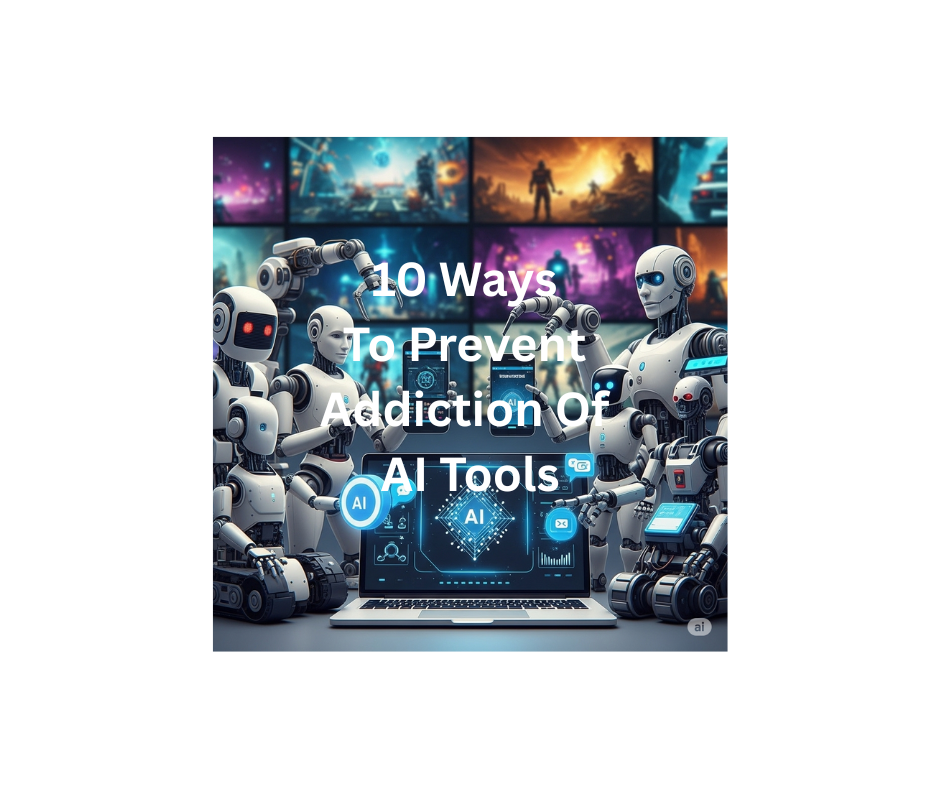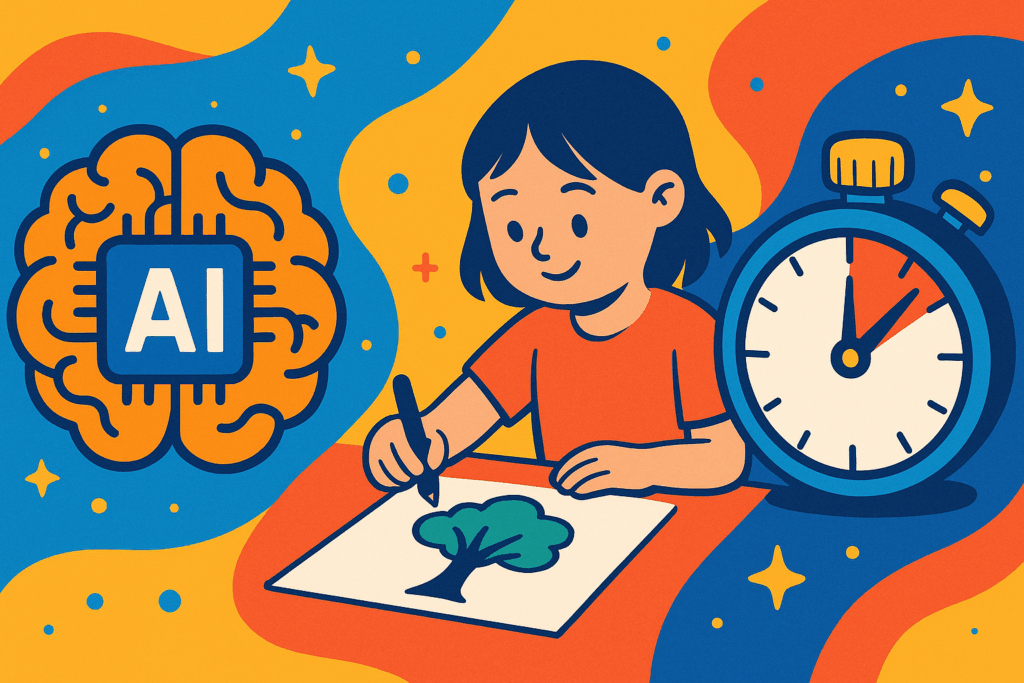10 Smart Ways to Prevent Kids from Becoming Addicted to AI Tools
By Madhurie Singh, June 14, 2025

Written by an Educational Technologist & Child Development Expert
Artificial intelligence is quickly becoming part of daily learning, and parents now face a major challenge: helping their children use AI as a helpful tool, not a crutch. AI actively boosts curiosity, creativity, and access to information. But when children use it without limits, it often causes dependency, weakens problem-solving, and shortens attention spans. Here are ten expert-backed strategies you can use to keep your child’s relationship with AI healthy and growth-focused.

🧠 Teach “Brain First, AI Later”
Always encourage your child to think, guess, or attempt the task before turning to AI for help. This reinforces effort and mental stamina. Remember, we all learned by pushing ourselves the hard way. That grew neurons and brain cells were connected with pathways. But no hard work, no memory will develop, no brain power will develop.
✍️ Prioritise Handwriting and Drawing
Avoid replacing writing or drawing practice with AI-generated content. Let your children express ideas with a pencil and paper daily. Since most of the younger ones still do not know about AI, keep it like that, unless there is an AI tool that helps and pushes your child to write, read and draw. A dream AI tool.
⏳ Set AI Time Limits
Use a daily or weekly timer for AI use (e.g., 20 minutes a day). Outside this time, promote screen-free problem-solving and creative play.

👂 Use AI for Discovery, Not Just Answers
Ask your child to explore why and how, not just what. For example, instead of “What is 7×8?” ask, “How many ways can we reach 56?”
🎭 Practice Real-World Creativity
Encourage storytelling, role-playing, and building things with hands-on materials. Let AI be a sidekick—not the storyteller.
📚 Balance with Books
Use AI to find books or project ideas, not to replace reading. Encourage children to find answers from books before checking with AI.
👨👩👧 Have Offline Curiosity Conversations
Make it a family rule: “Ask someone before asking something.” Build critical thinking through family discussions and debates.
🧩 Use AI to Create, Not Complete Tasks
Instead of generating full answers, use AI to brainstorm ideas. Example: “Let’s use AI to give us character names, not write the full story.”
🔐 Choose Child-Safe, Offline AI Tools
Avoid public AI platforms with no filters. Use tools that work offline, protect privacy, and are designed for your child’s age and learning needs.
❤️ Model Balanced Tech Use
Your habits matter. When your child sees you thinking, reading, or problem-solving without tech, they learn to do the same.
Final Thought:
AI is powerful, but your child’s own thinking is priceless. With gentle boundaries and the right tools, AI can be a bridge, not a barrier, to lifelong learning.
Do read my best article on AI where I am telling you how our children’s brains are in the danger of getting destroyed, AI and Indian Kids: Is It Helping or Hurting Brain Development?
And this article is important to know how our brains works when we read a book which AI will prevent , What Happens Inside Your Child’s Brain When They Read?
Reference Sources:
How Effective is Critical Reading in the Understanding of Scientific Texts? Researchgate.net
Brain activation for reading and listening comprehension National Library Of Medicine, USA
How Memories Are Made: Stages of Memory Formation Lesley University, USA
AI Image Generator: Online Text to Image App, Canva
Psychologically speaking: your brain on writing, University of Waterloo
Improving emotion regulation and communication for children , ScienceDirect.com
Where in the brain does creativity come from? JWU.edu
The brain makes sense of math and language in different ways , University of Maryland
Brain Anatomy and How the Brain Works, John hopkins Medicine, USA






Login is required
Don't have an account? Sign Up